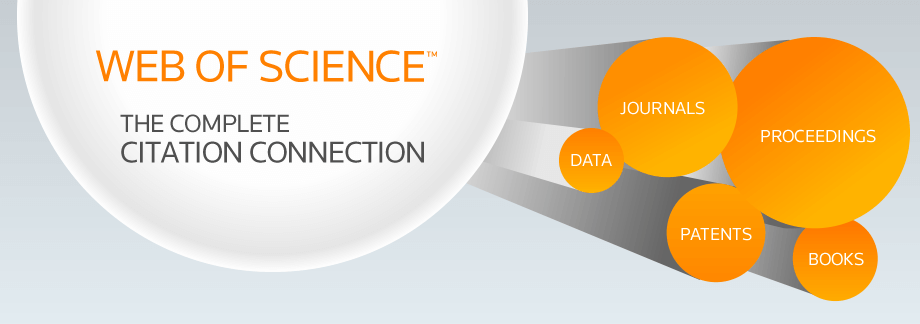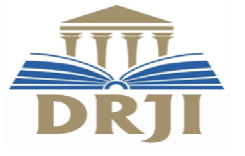INTERNATIONAL JOURNAL OF CREATIVE RESEARCH THOUGHTS - IJCRT (IJCRT.ORG)
International Peer Reviewed & Refereed Journals, Open Access Journal
IJCRT Peer-Reviewed (Refereed) Journal as Per New UGC Rules.
ISSN Approved Journal No: 2320-2882 | Impact factor: 7.97 | ESTD Year: 2013
Call For Paper - Volume 13 | Issue 11 | Month- November 2025
Scholarly open access journals, Peer-reviewed, and Refereed Journals, Impact factor 7.97 (Calculate by google scholar and Semantic Scholar | AI-Powered Research Tool) , Multidisciplinary, Monthly, Indexing in all major database & Metadata, Citation Generator, Digital Object Identifier(CrossRef DOI)
Contact Us Click Here
WhatsApp Contact Click Here
Volume 12 | Issue 9
| IJCRT Journal front page | IJCRT Journal Back Page |
Paper Title: PHYSICO-CHEMICAL ANDMICROBIAL QUALITY AND CHARECTERISTICS OF STREET VENDED FRUIT JUICES A REVIEW
Publisher Journal Name: IJCRT
Your Paper Publication Details:
Published Paper ID: - IJCRTAP02032
Register Paper ID - 269681
Title: PHYSICO-CHEMICAL ANDMICROBIAL QUALITY AND CHARECTERISTICS OF STREET VENDED FRUIT JUICES A REVIEW
Author Name(s): Dr.U.Srineetha, D.VeeraNagendra Kumar, C.Narasimha Rao, Dr.P.Sachi Devi
Publisher Journal name: IJCRT
Volume: 12
Issue: 9
Pages: 240-250
Year: September 2024
Downloads: 228
Abstract
Street vended fruit juices are on high demand because of their nutritive value and mineral and vitamin content but the concern on food safety is very high. There is little evidence for the association between fruit juice, especially 100% fruit juice, and mortality risk. In addition, whether 100% fruit juice can be a healthy alternative to whole fruit remains uncertain. This study is aimed to detect different food borne micro-organisms along with Physico-chemical characteristics of freshly prepared street vended fruit juices (orange, pineapple, grape, mixed fruit juices). A total of 100 juice samples from five different places stalls of Pulivendla were collected and examined for their physic -chemical properties and for their microbiological quality. Physico-chemical properties of fruit juices include pH, Titrable acidity and TSS,ash, total soluble solid, total sugar, reducing sugar and titrable acidity, vitamins and microorganisms.
Licence: creative commons attribution 4.0
License
Keywords
Street vended fruit juices, micro-organisms, physic-chemical characters.
License
Paper Title: INSIGHTS INTO BIOCATALYSTS: APPLICATIONS AND ADVANCES
Publisher Journal Name: IJCRT
Your Paper Publication Details:
Published Paper ID: - IJCRTAP02031
Register Paper ID - 269682
Title: INSIGHTS INTO BIOCATALYSTS: APPLICATIONS AND ADVANCES
Author Name(s): Vijay Swaroop Singh Gaddala
Publisher Journal name: IJCRT
Volume: 12
Issue: 9
Pages: 234-239
Year: September 2024
Downloads: 226
Abstract
Their distinctive properties, unequaled to date in catalyzing reactions under mild conditions and of great specificity, have conferred a paramount status on biocatalysts--enzymes and whole cells--in sustainable industrial practice. Some recent advancements in this field of biocatalysis, ranging from pharmaceutical industries to environmental cleaning and food processing, are highlighted in this review article. Advanced techniques include protein engineering, immobilization techniques, and unconventional media, which have gained strength in increasing measure. Such techniques increase efficiency and stability. Besides, this review will cover the challenges and future perspectives of biocatalytic technologies as underlining their contribution to the global problems of sustainability.
Licence: creative commons attribution 4.0
License
Keywords
Biocatalysts, Enzymes, Whole Cells, Sustainability, Environmental Remediation, Protein Engineering.
License
Paper Title: CLIMATE CHANGE AND BIOLOGICAL IMPLICATIONS Climate Change and Biological Implications in the Indian Subcontinent
Publisher Journal Name: IJCRT
Your Paper Publication Details:
Published Paper ID: - IJCRTAP02030
Register Paper ID - 269683
Title: CLIMATE CHANGE AND BIOLOGICAL IMPLICATIONS CLIMATE CHANGE AND BIOLOGICAL IMPLICATIONS IN THE INDIAN SUBCONTINENT
Author Name(s): Mr.Modugu Aruna, Dr.P.B.Sandhya Sri
Publisher Journal name: IJCRT
Volume: 12
Issue: 9
Pages: 229-233
Year: September 2024
Downloads: 214
Abstract
Climate change is a pressing global issue with profound effects on ecosystems and biodiversity. The Indian subcontinent, with its diverse climatic zones and rich biodiversity, is particularly vulnerable to these changes. This paper examines the impact of climate change on the region, focusing on temperature increases, shifting precipitation patterns, and the rise in extreme weather events. These climatic alterations have significant biological implications, affecting flora and fauna across the subcontinent. Forests are experiencing shifts in composition and increased fire frequency, while agricultural crops face reduced yields and altered growing conditions. Terrestrial mammals, avian species, and marine life are also experiencing disruptions due to changing habitats and environmental conditions. The paper further explores the broader impacts on ecosystems, including biodiversity loss and disruption of ecosystem services. Socioeconomic repercussions, such as impacts on agriculture, food security, and public health, are also discussed. Adaptation and mitigation strategies, including conservation efforts, sustainable practices, and policy recommendations, are examined to address these challenges. Case studies highlight specific regional and species-related impacts, providing insights into effective responses. The findings underscore the urgency of integrated climate action to safeguard both ecological and human systems in the Indian subcontinent.
Licence: creative commons attribution 4.0
License
Keywords
CLIMATE CHANGE AND BIOLOGICAL IMPLICATIONS Climate Change and Biological Implications in the Indian Subcontinent
License
Paper Title: IMPACT OF BIOFERTILIZERS ON GROWTH AND YIELD OF SELECTED MAIZE VARIETIES GROWING IN VIZIANAGARAM DISTRICT OF ANDHRA PRADESH
Publisher Journal Name: IJCRT
Your Paper Publication Details:
Published Paper ID: - IJCRTAP02029
Register Paper ID - 269684
Title: IMPACT OF BIOFERTILIZERS ON GROWTH AND YIELD OF SELECTED MAIZE VARIETIES GROWING IN VIZIANAGARAM DISTRICT OF ANDHRA PRADESH
Author Name(s): J. Lavanya, D. Sandhya Deepika, Mandru Ramesh Chowdary
Publisher Journal name: IJCRT
Volume: 12
Issue: 9
Pages: 217-228
Year: September 2024
Downloads: 256
Abstract
Maize is a staple food grain and third important cereal crop in India after rice and wheat that grows in a wide range of environments ranges from a semi-arid region to humid regions. India ranks about 4th position in the world by area and 7th in production. Andhra Pradesh is one of the largest producers of maize in India. According to the data collected between 2021-2022 maize in Andhra Pradesh was cultivated in an area of 3.42 lakh ha of yield and a productivity of 20.49 lakh tonnes and 5991 kg/ha respectively contributing about 6.09 per cent to total country's production. Vizianagaram district is located at the north eastern region where maize productionof Andhra Pradesh that ranks 4th place in the state with an area of cultivation about 41 hectares with a yield of 3797 Kg/ha. The yield in kharif is more when compared to rabi. The production varies with use of different varieties. Biofertilizers are the natural products obtained from microorganisms as a result of decomposing organic substances and help in overall growth and development of the plant. The present study discusses the use of biofertilizers and their effects on growth and yield of maize varietiesof both kharif and rabi. The DHM103 and DHM107are taken as kharif varieties and PUSA hybrid-1 and Ganga II are taken for rabi season from Vizianagaram district of Andhra Pradesh.
Licence: creative commons attribution 4.0
License
Keywords
IMPACT OF BIOFERTILIZERS ON GROWTH AND YIELD OF SELECTED MAIZE VARIETIES GROWING IN VIZIANAGARAM DISTRICT OF ANDHRA PRADESH
License
Paper Title: ADVANCEMENTS AND CONTRIBUTIONS IN PLANT PHYSICS: A HISTORICAL AND CONTEMPORARY OVERVIEW OF INDIAN RESEARCH
Publisher Journal Name: IJCRT
Your Paper Publication Details:
Published Paper ID: - IJCRTAP02028
Register Paper ID - 269685
Title: ADVANCEMENTS AND CONTRIBUTIONS IN PLANT PHYSICS: A HISTORICAL AND CONTEMPORARY OVERVIEW OF INDIAN RESEARCH
Author Name(s): V.Umalakshmi
Publisher Journal name: IJCRT
Volume: 12
Issue: 9
Pages: 211-216
Year: September 2024
Downloads: 260
Abstract
The field of plant physics in India, which bridges plant biology and physical sciences, has seen significant growth over the years. Rooted in traditional knowledge, such as the Vedas and Ayurveda, India's historical engagement with plant studies laid the foundation for modern scientific exploration. The pioneering work of Sir Jagadish Chandra Bose in plant electrophysiology marked the formal beginning of plant physics in India. Post-independence, the establishment of institutions like the Indian Council of Agricultural Research (ICAR) fostered research in plant physiology, leading to advancements in areas such as water transport, photosynthesis, and plant adaptation to climate change. Contemporary research focuses on mechanobiology and climate resilience, with increased collaboration between Indian and international institutes. The field continues to evolve, positioning India as a key contributor to global research in plant physics.
Licence: creative commons attribution 4.0
License
Keywords
plant electrophysiology, mechanobiology, climate resilience
License
Paper Title: A STUDY ON URBAN SOLID WASTE MANAGEMENT IN MADANAPALLE MUNCIPALITY
Publisher Journal Name: IJCRT
Your Paper Publication Details:
Published Paper ID: - IJCRTAP02027
Register Paper ID - 269686
Title: A STUDY ON URBAN SOLID WASTE MANAGEMENT IN MADANAPALLE MUNCIPALITY
Author Name(s): Dr SAILAJA C.S
Publisher Journal name: IJCRT
Volume: 12
Issue: 9
Pages: 207-210
Year: September 2024
Downloads: 252
Abstract
Urban Solid Waste Management presents significant challenges for India and the world. Various types of waste are generated from urban activities, including residential, agricultural, industrial, mining, and biomedical sources. These materials are often discarded as unusable. Effective urban waste management not only involves the disposal of waste but also emphasizes the reduction of waste generation. Proper collection and secure disposal methods are crucial. In India, common disposal methods include open dumping, ocean dumping, sanitary landfilling, composting, and incineration. Waste collection typically involves fixed storage bins, with refuse stored until collected by larger vehicles for transfer to disposal sites. Popular collection methods include community storage points, kerb side collection, and block collection. The implementation of reduction, reuse, and recycling (the 3Rs) presents additional opportunities for improving waste management. Poor solid waste management poses serious risks to both environmental integrity and public health.
Licence: creative commons attribution 4.0
License
Keywords
Solid Waste, Landfill, Management, Methods, Environment, Public Health
License
Paper Title: NANOBIOTECHNOLOGY Nanobiotechnology: Advances, Applications, and Future Prospects
Publisher Journal Name: IJCRT
Your Paper Publication Details:
Published Paper ID: - IJCRTAP02026
Register Paper ID - 269687
Title: NANOBIOTECHNOLOGY NANOBIOTECHNOLOGY: ADVANCES, APPLICATIONS, AND FUTURE PROSPECTS
Author Name(s): Dr.P.B.Sandhya Sri, Mr.Modugu Aruna
Publisher Journal name: IJCRT
Volume: 12
Issue: 9
Pages: 202-206
Year: September 2024
Downloads: 243
Abstract
Nanobiotechnology, an interdisciplinary field merging nanotechnology and biology, offers transformative solutions across medicine, agriculture, and environmental science by manipulating materials at the nanoscale (1-100 nanometers). This paper provides a comprehensive overview of the principles, applications, and future directions of nanobiotechnology. It explores the unique properties of nanoscale materials, such as nanoparticles, nanowires, and nanotubes, and their interactions with biological systems. In medicine, nanobiotechnology enhances drug delivery, diagnostics, and therapeutic strategies, such as targeted drug delivery and photothermal therapy. In agriculture, it improves pesticide delivery, soil and water remediation, and plant growth through nano-fertilizers and nano-priming. Environmental applications include pollutant detection, waste management, and water purification using nanomaterials. The paper also addresses safety and ethical considerations, including the toxicity of nanomaterials, regulatory frameworks, and societal implications. Looking ahead, emerging trends such as multifunctional nanomaterials and integration with artificial intelligence are discussed, alongside challenges and opportunities for advancing the field. This review highlights the potential of nanobiotechnology to revolutionize various sectors while emphasizing the need for responsible development and interdisciplinary collaboration..
Licence: creative commons attribution 4.0
License
Keywords
NANOBIOTECHNOLOGY Nanobiotechnology: Advances, Applications, and Future Prospects
License
Paper Title: MORPHO-ANATOMICAL STUDIES OF LAGERSTROMIA PARVIFLORA (ROXB. PL. CORT. 66.1795 WIGHT). AN IMPORTANT MEDICINAL PLANT, CHITTOR DT. OF ANDHRA PRADESH, INDIA
Publisher Journal Name: IJCRT
Your Paper Publication Details:
Published Paper ID: - IJCRTAP02025
Register Paper ID - 269688
Title: MORPHO-ANATOMICAL STUDIES OF LAGERSTROMIA PARVIFLORA (ROXB. PL. CORT. 66.1795 WIGHT). AN IMPORTANT MEDICINAL PLANT, CHITTOR DT. OF ANDHRA PRADESH, INDIA
Author Name(s): V. Naga Padmavathi, G.S.Ranganayakulu
Publisher Journal name: IJCRT
Volume: 12
Issue: 9
Pages: 196-201
Year: September 2024
Downloads: 293
Abstract
Lagerstromia parviflora belongs to the family Lythraceae and widely used for various ailments as ethno medicine in and around Chittor Dt. of Andhra Pradesh. In this present study based on morpho anatomical studies of root, stem and leaf, in order to provide a scientific basis we authenticated that the Lagerstromia parviflora is an important medicinal plant. The medicinal properties and other taxonomical, microscopical characters confirmed that L. parviflora has apparent anatomical distinctiveness and peculiarities which differentiate with any adulterant taxa and other important things were discussed here.
Licence: creative commons attribution 4.0
License
Keywords
Lagerstromia parviflora, Morpho anatomy, Adulteration
License
Paper Title: CLIMATE REFUGEES: THE HUMAN COST OF A CHANGING CLIMATE
Publisher Journal Name: IJCRT
Your Paper Publication Details:
Published Paper ID: - IJCRTAP02024
Register Paper ID - 269689
Title: CLIMATE REFUGEES: THE HUMAN COST OF A CHANGING CLIMATE
Author Name(s): Yaragorla Gnanaprasunamba, Vankamaddi Madan Mohan Rao
Publisher Journal name: IJCRT
Volume: 12
Issue: 9
Pages: 187-195
Year: September 2024
Downloads: 222
Abstract
Climate change is driving unprecedented levels of human displacement, with profound social, economic, and environmental consequences. These displaced individuals, often referred to as climate refugees, are compelled to leave their homes due to the effects of rising sea levels, increased frequency and severity of extreme weather events, and environmental degradation such as drought and desertification. This article provides a comprehensive review of the causes and impacts of climate-induced displacement, exploring the challenges faced by these populations. It critically examines existing legal and policy frameworks, highlighting gaps in protection for climate refugees, and discusses various adaptation and mitigation strategies. Through an analysis of the latest research, this review underscores the urgent need for coordinated international action to address the human cost of climate change.
Licence: creative commons attribution 4.0
License
Keywords
Climate refugees, climate change, human displacement, rising sea levels, extreme weather events, drought, desertification, environmental impacts, adaptation strategies, mitigation, international law, human rights, sustainable solutions.
License
Paper Title: ROLE OF ARTIFICIAL INTELLIGENCE (AI) IN SCIENCE AND TECHNOLOGY IN FUTURE
Publisher Journal Name: IJCRT
Your Paper Publication Details:
Published Paper ID: - IJCRTAP02023
Register Paper ID - 269690
Title: ROLE OF ARTIFICIAL INTELLIGENCE (AI) IN SCIENCE AND TECHNOLOGY IN FUTURE
Author Name(s): Dr.N. Thulasi, Suprabha Panda, Dr.G. Pranitha
Publisher Journal name: IJCRT
Volume: 12
Issue: 9
Pages: 182-186
Year: September 2024
Downloads: 286
Abstract
Artificial Intelligence (AI) has emerged as a pivotal force in shaping the future of science and technology. As AI technologies advance, they are increasingly being integrated into various domains, transforming traditional methodologies and expanding the horizons of what is possible in research and development. From accelerating scientific discoveries to driving technological innovations, AI's role is becoming ever more central in these fields.
Licence: creative commons attribution 4.0
License
Keywords
ROLE OF ARTIFICIAL INTELLIGENCE (AI) IN SCIENCE AND TECHNOLOGY IN FUTURE
License
Paper Title: CHECKLIST, DISTRIBUTION OF PRAWNS OF VAMSADHARA AND NAGAVALI EASTUARIES OF SRIKAKULAM DISTRICT IN ANDHRAPRADESH, INDIA.
Publisher Journal Name: IJCRT
Your Paper Publication Details:
Published Paper ID: - IJCRTAP02022
Register Paper ID - 269691
Title: CHECKLIST, DISTRIBUTION OF PRAWNS OF VAMSADHARA AND NAGAVALI EASTUARIES OF SRIKAKULAM DISTRICT IN ANDHRAPRADESH, INDIA.
Author Name(s): YALLA POLI NAIDU
Publisher Journal name: IJCRT
Volume: 12
Issue: 9
Pages: 173-181
Year: September 2024
Downloads: 273
Abstract
The Vamsadhara and Nagavali rivers are the two major river systems in the district of Srikakulam in Andhra Pradesh state of India. These two rivers originate in the Eastern Ghats of Odhisha state that is at Thuamul Rampur in the Kalahandi district enters into Andhra Pradesh and flows through the Srikakulam district till they connect to Bay of Bengal i.e Vamsadhara at Kalingapatnam and Nagavali at Kallepalli areas as (Fig-01) in Map showing it. Both the rivers form a dynamic and complex ecosystem. Crustaceans' mainly freshwater prawns and marine water shrimps that are available naturally in these waters are good fishery resources and plays a crucial role in the country's economy and also one of the top earners of foreign exchange.
Licence: creative commons attribution 4.0
License
Keywords
CHECKLIST, DISTRIBUTION OF PRAWNS OF VAMSADHARA AND NAGAVALI EASTUARIES OF SRIKAKULAM DISTRICT IN ANDHRAPRADESH, INDIA
License
Paper Title: A REVIEW ON COMBATING BLACK MOLD DISEASE IN ONIONS: A SYNERGISTIC APPROACH TO COMBAT ASPERGILLUS NIGER FOR SUSTAINABLE STORAGE
Publisher Journal Name: IJCRT
Your Paper Publication Details:
Published Paper ID: - IJCRTAP02021
Register Paper ID - 269692
Title: A REVIEW ON COMBATING BLACK MOLD DISEASE IN ONIONS: A SYNERGISTIC APPROACH TO COMBAT ASPERGILLUS NIGER FOR SUSTAINABLE STORAGE
Author Name(s): Dr. Shaik Beebi, Dr. Syed Vaziha Tahaseen, Dr. Matala Bhupathi Rayalu
Publisher Journal name: IJCRT
Volume: 12
Issue: 9
Pages: 165-172
Year: September 2024
Downloads: 241
Abstract
Aspergillus niger is a widespread fungal pathogen responsible for black mold on onions and other crops, resulting in significant post-harvest losses, due to reduced shelf life, spoilage, and economic losses to diminished market value and increased waste. The rise in resistance to traditional antifungal treatments has driven the search for alternative, sustainable methods to combat this pathogen. This research review explores the antifungal efficacy of various plant extracts and nanoparticles against A. niger, with a focus on their effectiveness in controlling onion infections. We conducted a comprehensive analysis of existing research on plant extracts from neem (Azadirachta indica), garlic (Allium sativum), clove (Syzygium aromaticum), cinnamon (Cinnamomum verum), and turmeric (Curcuma longa) for their ability to inhibit fungal growth. Additionally, recent advancements in the development and application of nanoparticles including silver (AgNPs), zinc oxide (ZnO NPs), copper oxide (CuO NPs), and iron oxide (Fe?O? NPs) were tested for their antifungal properties. These findings suggest that both plant extracts and nanoparticles present promising alternatives for managing A. niger infections in onions, potentially reducing dependence on synthetic fungicides and supporting sustainable agricultural practices. The review underscores the potential of combining biocompatible nanoparticles with plant extracts and offers a cost-effective and sustainable solution for future antifungal agents in food packaging, clinical, and agricultural settings. This analysis highlights the most promising nanoparticle formulations by using fungicidal plant extracts for inhibiting Aspergillus niger, thereby enhancing the post-harvest storage of onions.
Licence: creative commons attribution 4.0
License
Keywords
Aspergillus niger, antifungal properties, plant extracts, Nanoparticles.
License
Paper Title: A review on Recent Advancement of Aquaculture industry through vaccination: It's role in preventing infectious fish pathogens
Publisher Journal Name: IJCRT
Your Paper Publication Details:
Published Paper ID: - IJCRTAP02020
Register Paper ID - 269693
Title: A REVIEW ON RECENT ADVANCEMENT OF AQUACULTURE INDUSTRY THROUGH VACCINATION: IT'S ROLE IN PREVENTING INFECTIOUS FISH PATHOGENS
Author Name(s): Dr. K. Sudhakar
Publisher Journal name: IJCRT
Volume: 12
Issue: 9
Pages: 157-164
Year: September 2024
Downloads: 229
Abstract
Compared with the animal husbandry, Fish farming is new method and it is rapidly becoming one of the pivotal sectors in the agriculture economy across the World, driven by the ever-increasing demand for high quality animal protein at reasonable price, especially with the exponentially increasing human population. However, the development of high density fish populations also brings forth a challenge - the hasty transmission and spread of infectious disease agents in aquaculture. During the early days, when diseases appeared in aqua-farming practices, antibiotics or chemotherapeutics were used for disease treatment, and even for disease control. Preventive measures have become more and more significant as part of bio-security in aquaculture. Disease prevention by using vaccines is predominantly important in aquaculture where the number of individuals at high risk and where treatment is a challenge from practical, technical and economic points of view. Vaccination in general, a safe and cost-effectively acceptable preventive measure as it contributes to a sustainable aquaculture with low use of antibiotics. To control and prevent viral, bacterial and some extent parasitic infectious diseases, vaccination is the well-organized method. In the 1938 Snieszko et al., reported very first in his published article about disease prevention using vaccines and protective immunity in carp immunized with Aeromonas punctata. Vaccine development technology in aqua-farming has advanced very rapidly after the invention of the inactivated Aeromonas salmonicida vaccine in 1942. Fish vaccination has been used in aquaculture since the 1980s to prevent infectious diseases. Now there is diverse range of vaccines commercially available in the market including live attenuated, killed/inactivated or genetically engineered vaccines for viral and bacterial diseases. Currently, most commercially available vaccines for aquatic organisms are inactivated, and the basic method of manufacturing of vaccines is still the inactivation by means of either physical or chemical methods of virulent wild-type pathogens. However, live attenuated vaccination in aquaculture practices offers numerous beneficial effects over inactivated vaccines viz., method of vaccination is simple, manufacturing costs are low, provide prolonged immunity, vaccine delivery is very rapid and low dose of immunization. In recent times, with the incessant diminution of technological price (for example, sequencing of genome, sophistication in screening of antigens, advancements in cell culture, etc), the progress of innovative antigen expression and delivery mechanisms, and the immense accretion of fundamental knowledge on mucosal immunity of fish, vaccines for aquaculture are guaranteed to see rapid improvement in the upcoming years. Advancement in developing greatly effective vaccines against mucosal immunity and subsequent adjuvants is a significant direction for forthcoming development, and improving vaccine delivery methods will certainly enable the new vaccines development.
Licence: creative commons attribution 4.0
License
Keywords
Adjuvants, Aqua-farming, Immunization, Live attenuated vaccines, Vaccination
License
Paper Title: IMPACT OF HABITAT FRAGMENTATION ON SPIDER DIVERSITY: A COMPARATIVE ANALYSIS ACROSS URBAN, AGRICULTURAL, AND NATURAL LANDSCAPE
Publisher Journal Name: IJCRT
Your Paper Publication Details:
Published Paper ID: - IJCRTAP02019
Register Paper ID - 269694
Title: IMPACT OF HABITAT FRAGMENTATION ON SPIDER DIVERSITY: A COMPARATIVE ANALYSIS ACROSS URBAN, AGRICULTURAL, AND NATURAL LANDSCAPE
Author Name(s): Dr. H. Ramasubba Reddy
Publisher Journal name: IJCRT
Volume: 12
Issue: 9
Pages: 146-156
Year: September 2024
Downloads: 262
Abstract
The study aims at assessing the effects of habitat fragmentation on spider distribution in the urban, agricultural, and natural habitats of Nallamala forest, Andhra Pradesh. The study was carried out for six months, and the spider sampling methods included pitfall traps and visual encounters inSundipenta project region, agricultural Dornala region, and natural Rajiv Ghandi Wildlife Sanctuary. It was found that there are highly significant differences in the spider species richness and diversity among the different landscapes. The natural site had the highest species richness and diversity indices than the other sites while the urban site had the lowest. The results of statistical tests further showed that spider diversity was significantly affected by the type of landscape (p < 0. 001). NMDS and PERMANOVA tests suggested that spider assemblages were significantly different among the landscape types. The rarefaction curves indicated that the sampling effort for the natural and agricultural sites was sufficient, whereas the sampling effort for the urban site may require further sampling. The results of this study show that habitat fragmentation has a negative impact on spider species richness and that future conservation efforts should focus on combating urbanization and intensive agriculture.
Licence: creative commons attribution 4.0
License
Keywords
Habitat fragmentation, spider diversity, natural landscapes, species richness, multivariate analysis, conservation strategies
License
Paper Title: KINETICS OF OXIDATION OF A FEW ?-AMINO ACIDS BY GIBBS REAGENT
Publisher Journal Name: IJCRT
Your Paper Publication Details:
Published Paper ID: - IJCRTAP02018
Register Paper ID - 269695
Title: KINETICS OF OXIDATION OF A FEW ?-AMINO ACIDS BY GIBBS REAGENT
Author Name(s): Dr.Neeraja .V, Sailaja .V, Dr.V.Phani kumar
Publisher Journal name: IJCRT
Volume: 12
Issue: 9
Pages: 140-145
Year: September 2024
Downloads: 196
Abstract
A systematic and comparative study of oxidation of a few ? -amino acids like Glycine DL- Leucine ,DL-Isoleucine, DL-alanine, DL-Phenyl Alanine by using 2,6-dichloroquinone-4-chloro-imide has been carried out in aqueous acetic acid-sodium acetate mixtures. The kinetic orders aresimilar that is first order in oxidizing agent for all the substrates. The substrate dependence is first order for all the substrates. If we increase sodium acetate concentration leads to increases the reaction rate. In these analysis we observed that in these oxidations is with alanine as standard, substrates with electron releasing groups like Glycine and alanine and substrates with electron with drawing groups like Phenyl alanine , serine ,Aspartic acid exhibited higher kinetic rates. This shows that there is a dual mechanism operating in these oxidations. log k1 vs ? plot is not linear as two lines intersect giving two different slopes. The slopes are -2.45 for substrates with electron releasing groups and +1.67 for substrates with electron with drawing groups. Hepler's treatment has been applied to understand the nature of entropy-enthalpy relationship on the kinetics of these reactions. Finally a synchronous oxidative decarboxylation process has been postulated to explain the oxidation of these ? -amino acids. The major products are the nitriles.
Licence: creative commons attribution 4.0
License
Keywords
:? -amino acids -electron releasing groups -First order kinetics- Electron withdrawing groups-Kinetic order- Entropy- Enthalpy relationship
License
Paper Title: COMPUTATIONAL BIOLOGY: A SURVEY ON CURRENT TRENDS AND FUTURE SCOPE
Publisher Journal Name: IJCRT
Your Paper Publication Details:
Published Paper ID: - IJCRTAP02017
Register Paper ID - 269696
Title: COMPUTATIONAL BIOLOGY: A SURVEY ON CURRENT TRENDS AND FUTURE SCOPE
Author Name(s): Lavanya A L, Dr T Nagalakshmi
Publisher Journal name: IJCRT
Volume: 12
Issue: 9
Pages: 135-139
Year: September 2024
Downloads: 210
Abstract
Computational biology is a rapidly progressing interdisciplinary field that applies computational techniques and algorithms to understand biological processes at a molecular, cellular, and systems level. It combines biology, computer science, mathematics, and statistics to analyse vast biological data sets and simulate complex biological manifestations. This survey provides a comprehensive overview of the current state of computational biology, covering key methodologies, applications, challenges, and future directions. We study areas such as genomics, systems biology, and drug discovery, and highlight emerging trends such as artificial intelligence (AI) and machine learning (ML) in biological research. This study concludes with a discussion of the future scope of computational biology in addressing global health, environmental, and agricultural challenges.
Licence: creative commons attribution 4.0
License
Keywords
Machine Learning, Artificial Intelligence, Biology
License
Paper Title: BIOSYNTHESIS OF SILVER NANAOPARTICLES FROM LEAF EXTRACT OF COCHLOSPERMUM RELIGIOSUM AND THEIR ANTIFUNGAL EFFICACY
Publisher Journal Name: IJCRT
Your Paper Publication Details:
Published Paper ID: - IJCRTAP02016
Register Paper ID - 269697
Title: BIOSYNTHESIS OF SILVER NANAOPARTICLES FROM LEAF EXTRACT OF COCHLOSPERMUM RELIGIOSUM AND THEIR ANTIFUNGAL EFFICACY
Author Name(s): Dr. A. Sasikala
Publisher Journal name: IJCRT
Volume: 12
Issue: 9
Pages: 125-134
Year: September 2024
Downloads: 220
Abstract
the biosynthesis of SNPs is not only inexpensive but also environmentally friendly with little or no side effects. In this study, the biosynthesis of silver nanoparticles and their activity against pathogens were carried out. SNPs were rapidly produced using leaf extract of the medicinal plant Cochlospermum religiosum and the formation of nanoparticles was observed within two minutes. The results recorded by UV-Visible spectroscopy and Atomic Force Microscope analysis support the biosynthesis and characterization of silver nanoparticles. The UV-Visible spectrum has a peak at 260 nm and the difference in the size of spherical SNPs varies from 40 to 100 nm. In addition, the synthesized SNP showed effective inhibitory activity against pathogens Aspergillus niger, Aspergillus flavus, Fusarium, Curvularia and Rhizopus. They are very toxic to Rhizopus followed by Aspergillus flavus, Aspergillus niger and Fusarium. Moderately toxic to Curvularia.
Licence: creative commons attribution 4.0
License
Keywords
Antibacterial activity, Cochlospermum religiosum, phytosynthesis, silver nanoparticles.
License
Paper Title: ETHNIC HERBALS USED AS ANTIDOTE TO SNAKE BITE BY YANADI, YERUKULA AND LAMBADI TRIBES OF TIRUVUR NTR DISTRICT, ANDHRA PRADESH, INDIA
Publisher Journal Name: IJCRT
Your Paper Publication Details:
Published Paper ID: - IJCRTAP02015
Register Paper ID - 269698
Title: ETHNIC HERBALS USED AS ANTIDOTE TO SNAKE BITE BY YANADI, YERUKULA AND LAMBADI TRIBES OF TIRUVUR NTR DISTRICT, ANDHRA PRADESH, INDIA
Author Name(s): Chandra Babu Nadendla
Publisher Journal name: IJCRT
Volume: 12
Issue: 9
Pages: 122-124
Year: September 2024
Downloads: 203
Abstract
The study on ethnic herbals used as antidote to snake bite by Yanadi, Yerukula and Lambadi tribal people of Tiruvur area provides information regarding nine herbal species of plants which comes from nine genera and seven Angiosperm families. Ethnic tribes of Tiruvuru mainly comprises of Yanadis, Yerukulas and Lambadis. The 9 plant species recorded against snake bite had shown that ethnic tribes were still depended on local vegetation for the care of their life, indeed.
Licence: creative commons attribution 4.0
License
Keywords
Antidote, Snake bite, Herbal medicine, Tiruvur, NTR district.
License
Paper Title: ANTIMICROBIAL AND QUALITATIVE PHYTOCHEMICAL SCREENING OF CYCAS BEDDOMEI LEAF EXTRACTS
Publisher Journal Name: IJCRT
Your Paper Publication Details:
Published Paper ID: - IJCRTAP02014
Register Paper ID - 269699
Title: ANTIMICROBIAL AND QUALITATIVE PHYTOCHEMICAL SCREENING OF CYCAS BEDDOMEI LEAF EXTRACTS
Author Name(s): K. Venkata Ratnam, R.R. Venkata Raju, Lepakshi Md. Bhakshu
Publisher Journal name: IJCRT
Volume: 12
Issue: 9
Pages: 113-121
Year: September 2024
Downloads: 204
Abstract
Cycas beddomei Dyer., Cycadaceae) is a Gymnosperm of only living genus of Cycadaceae, enlisted as Critically Endangered (C.E) under IUCN Status of Red listed with confined (endemic) to Seshachalam Hill Ranges of Eastern Ghats. It is one of the medicinal plant with proven therapeutic studies against the specific selected bacteria is equal to that of the herbal uses of C. beddomei male and female cones as aphrodisiac, skin diseases, mosquito repellent, general debility, rheumatoid arthritis, wound healing, antidiabetic, antidiarrheal and tuberculosis. However, the leaves are not yet reported for the biological and phytochemical studies. Hence, the present study focused and on the determination of the in vitro antimicrobial properties of leaf extracts using organic solvents and aqueous extracts. The ethanol and ethyl acetate extract of leaf exhibited maximum inhibition, while petroleum ether expressed moderate activity. Water extract failed to inhibit the test organisms. The preliminary phytochemical studies also attempted reviled for the presence of important groups of secondary metabolites. The present study revealed the potential inhibition properties against the selected bacteria and one fungal strain.
Licence: creative commons attribution 4.0
License
Keywords
Cycas beddomei; Endemic plant; Antimicrobial activity, Preliminary or qualitative phytochemical screening
License
Paper Title: AN IN-DEPTH RESEARCH REVIEW ON SYNTHETIC BIOLOGY: ENGINEERING LIFE AT THE MOLECULAR LEVEL
Publisher Journal Name: IJCRT
Your Paper Publication Details:
Published Paper ID: - IJCRTAP02013
Register Paper ID - 269700
Title: AN IN-DEPTH RESEARCH REVIEW ON SYNTHETIC BIOLOGY: ENGINEERING LIFE AT THE MOLECULAR LEVEL
Author Name(s): Dr. Matala Bhupathi Rayalu, Dr. Shaik Beebi
Publisher Journal name: IJCRT
Volume: 12
Issue: 9
Pages: 101-112
Year: September 2024
Downloads: 209
Abstract
Synthetic biology is an interdisciplinary field that integrates concepts from biology, engineering, chemistry, and computer science to design and construct novel biological entities or redesign existing biological systems for specific, useful purposes. This field represents a paradigm shift in how we understand and manipulate life, enabling unprecedented control over biological processes. The origins of synthetic biology can be traced back to early 20th-century molecular biology and genetics, but it was not until the 1970s, with the advent of recombinant DNA technology, that the field truly began to take shape. Recombinant DNA technology enabled scientists to manipulate genetic material with precision, leading to the creation of genetically modified organisms (GMOs) and laying the groundwork for modern synthetic biology. Today, synthetic biology is driving innovation across a wide range of sectors. In medicine, it promises to revolutionize drug development, gene therapy, and vaccine production by enabling the creation of more effective, personalized treatments. For instance, synthetic biology techniques have been used to engineer microorganisms to produce complex pharmaceuticals and to develop novel gene-editing technologies like CRISPR-Cas9, which allows precise modifications to the human genome. In agriculture, synthetic biology is being used to create genetically modified crops with improved yield, pest resistance, and nutritional content, as well as biofertilizers that enhance soil fertility without the need for chemical inputs. Environmental applications include the development of engineered microorganisms capable of bioremediation and biosensing, offering new tools for managing environmental pollution and sustainability. Additionally, synthetic biology is paving the way for sustainable energy solutions, such as biofuels produced by genetically modified organisms, and the production of bio-based materials like bioplastics. However, the rapid advancements in synthetic biology raise significant ethical, legal, and social challenges. Issues such as the potential risks of releasing GMOs into the environment, the moral status of synthetic life forms, and the equitable distribution of synthetic biology's benefits must be carefully managed. The future of synthetic biology will likely focus on refining tools and technologies, expanding applications, and addressing these ethical and social implications to ensure that the field develops in a safe, responsible, and equitable manner.
Licence: creative commons attribution 4.0
License
Keywords
Synthetic biology, Genetic engineering, CRISPR-Cas9, Recombinant DNA technology, Gene therapy, Bioremediation, Biofuels, Engineered probiotics, Metabolic engineering, and Synthetic vaccines
License
About IJCRT
The International Journal of Creative Research Thoughts (IJCRT) aims to explore advances in research pertaining to applied, theoretical and experimental Technological studies. The goal is to promote scientific information interchange between researchers, developers, engineers, students, and practitioners working in and around the world.
Indexing In Google Scholar, ResearcherID Thomson Reuters, Mendeley : reference manager, Academia.edu, arXiv.org, Research Gate, CiteSeerX, DocStoc, ISSUU, Scribd, and many more International Journal of Creative Research Thoughts (IJCRT) ISSN: 2320-2882 | Impact Factor: 7.97 | 7.97 impact factor and ISSN Approved. Provide DOI and Hard copy of Certificate. Low Open Access Processing Charges. 1500 INR for Indian author & 55$ for foreign International author. Call For Paper (Volume 13 | Issue 11 | Month- November 2025)
November 2025
Volume 13 | Issue 11
Last Date :
30-Nov-2025
Submit Manuscript Online Impact Factor: 7.97 Review Results : Within 02-03 Days Paper Publication : Within 02-03 Days

ISSN: 2320-2882 Impact Factor: 7.97 and ISSN APPROVED Journal Starting Year (ESTD) : 2013

ISSN: 2320-2882 Impact Factor: 7.97 and ISSN APPROVED Journal Starting Year (ESTD) : 2013

CONFERENCE PROPOSAL CONFERENCE PROCEEDINGS







































































